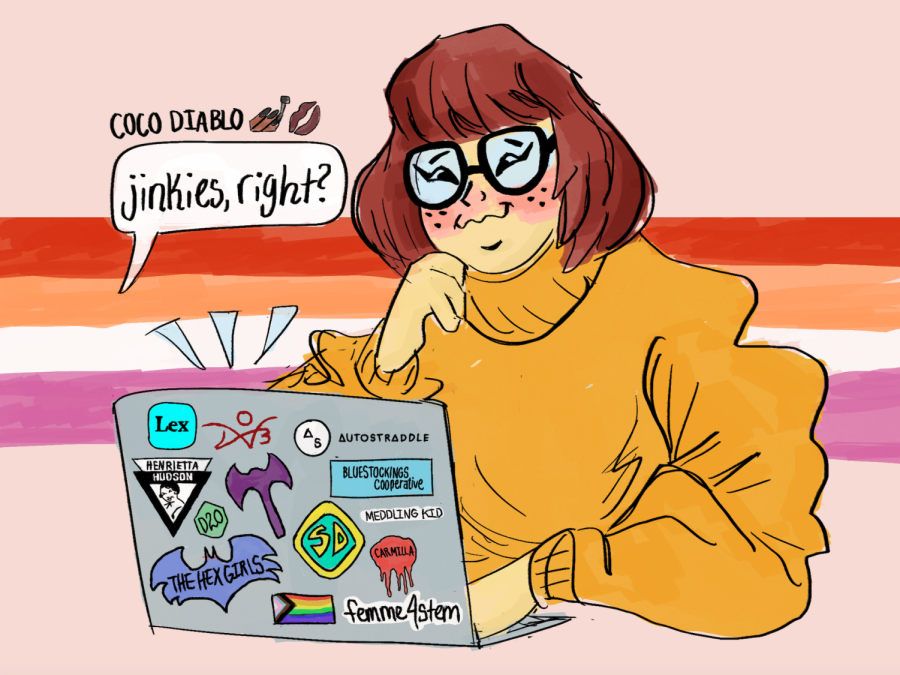Velma is gay! How ‘Scooby-Doo’ is contributing to LGBTQ representation
October 22, 2022
After 20 years of hints and theories, Velma from the “Scooby-Doo” series has officially been confirmed to be a lesbian. Many fans of the beloved cartoon had already deemed her to be a lesbian icon, which was why some fans were disappointed that it took so long for the franchise to confirm it.
The series first appeared as a Saturday morning cartoon in 1969, following a group of teenagers and their Great Dane, Scooby-Doo. Previously, show writers and producers said that Velma was lesbian but being pushback by studios, they were unable to depict her as one on screen.
In one scene of the new movie Velma falls head over heels at the sight of a new character, Coco Diablo, and in a later scene she goes on to say, “I’m crushing big time, Daphne. What do I do? What do I say?”
James Gunn, who wrote the early live-action films, and Tony Cervone, who served as a producer on the “Mystery Incorporated” series, have tried to be open about the character’s sexuality but were never able to make it official on screen.
“In 2001 Velma was explicitly gay in my initial script, but the studio just kept watering it down and watering it down, becoming ambiguous (the version shot), then nothing (the released version) and finally having a boyfriend (the sequel),” Gunn said, according to CNN.
“I’ve said this before, but Velma in ‘Mystery Incorporated’ is not bi. She’s gay.” Cervone wrote in an Instagram comment during Pride month in 2020. “I don’t think Marcie and Velma had time to act on their feelings during the main timeline, but post reset, they are a couple. You cannot like it, but this was our intention.”
The rise of showing lesbian characters in media has been a very slow process, normally starting with gimmicks that made ratings go up. In the past, they were written to spark people’s curiosity, rather than for allowing the couples to form genuine relationships. Luckily, this is a huge step towards showing LGBTQ couples in a new light, rather than the continuing over-done tropes.
It is no secret that what is presented in films can have a heavy impact on the opinions and actions of our society. It was this fear of influence that led many religious groups to rally behind Will Hays’ Hollywood Production Code of 1930, known as the “Hays Code.” This consists of 36 rules for filmmakers that purposely limited the representation, normalization, and behaviors of characters considered by many religious groups to be morally corrupt.
While some items on this list may have been banned for a reason, such as gruesome violence, detailed crime and sexual assault, “depiction of sexual perversion” had been a controversial topic for decades. This term was used to refer to any behavior deviating from the “perceived natural order of romance, sex, and gender.”
This ban applied to all characters who were attracted to the same gender or characters who differed in their gender presentation or identity. Even after LGBTQ characters were allowed to appear in films, their sexuality and gender was shrouded in thinly-veiled innuendos and visual cues. Even when these characters appeared in films, they were used as jokes or stereotypes.
This is why Velma’s character is so important. “OMG LESBIAN VELMA FINALLY CANON CANON IN THE MOVIES LETS GOOOOO,” one person tweeted after the clip of Velma getting googly-eyed at Coco went viral. The stories of LGBTQ couples deserve to be in American media, as well as showing their genuine relationships. One can only hope that this is a step in the right direction.








